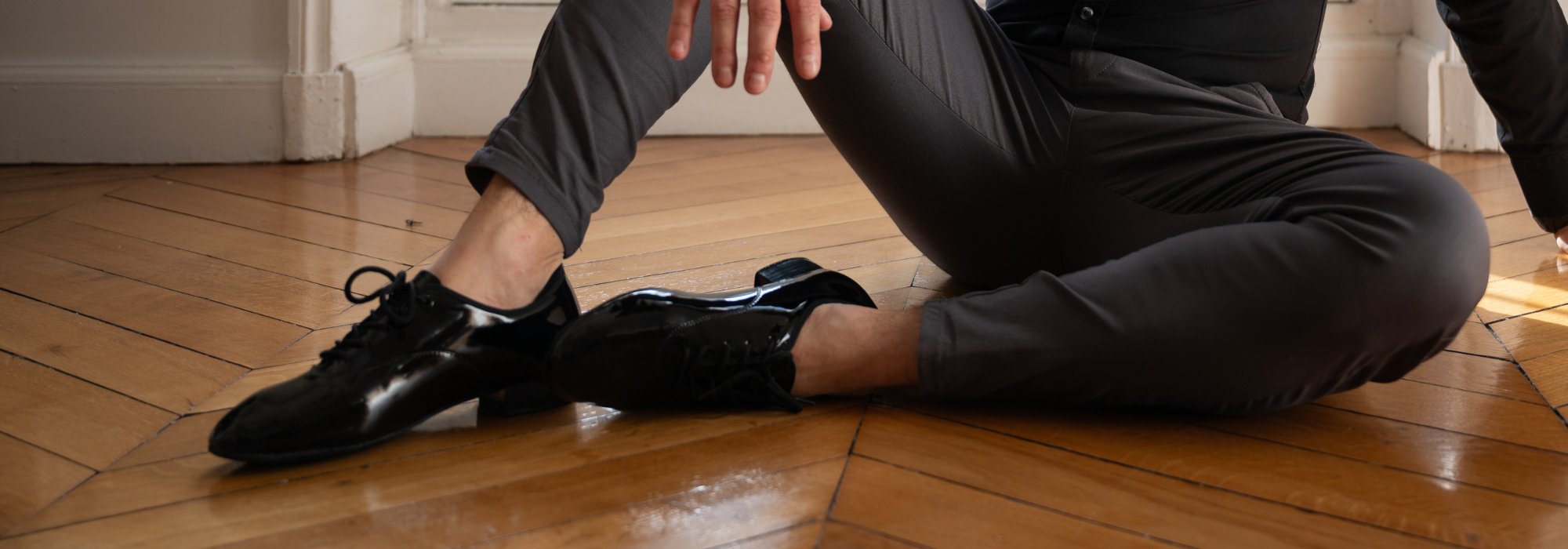What Latin dance to learn alone?
You don't know which Latin dance to choose to learn alone ? Wondering if you can really progress without a partner?
This page will enlighten you.
Latin dances are synonymous with passion, energy and connection. If they are mostly designed to be danced in two, some techniques can be worked solo.
Learning alone can be a good introduction, especially to improve your posture, style and musicality. However, Latin dance being an exchange dance, you quickly reach limits without practicing in duet.
We will therefore see:
-
The process to start dancing alone
-
The best Latin dance for beginners
-
The easiest and most difficult Latin dances to learn alone
-
The advantages and disadvantages of solo learning
Prepare to discover all the keys to understanding and getting the most out of solo dance!
The steps to learn to dance alone
If you want to start Latin dance without a partner, it is essential to follow a progressive method to maximize your learning. Here are the key steps to progress effectively solo.

Step 1: Choose the right Latin dance
First of all, you have to select a dance suitable for solo learning. There salsa, there bachata and the merengue are popular choices because they incorporate elements that can be worked without a partner.
-
Merengue : Ideal for getting used to Latin rhythms and weight transfers.
-
Bachata : perfect for developing body insulation and the fluidity of movements.
-
Salsa : requests more coordination, but provides a wide variety of shine (solo foot games).
Step 2: Work the basic step and the rhythm
Before thinking about advanced movements, you have to master the fundamentals:
-
Listen to the music : Identify the tempo and train yourself to mark time with your feet.
-
Practice the basis : repeat it slowly by following the rhythm.
-
Add progressive variations : Test different directions and accelerations to gain ease.
Once these bases are acquired, you can evolve towards more complex leg games.
Step 3: Develop coordination and balance
Latin dances demanded a good body control. By working alone, you can strengthen your balance and stability By integrating these exercises:
-
Work weight transfers To anchor each movement well.
-
Strengthen its center of gravity To run more fluid steps.
-
Avoid too jerky movements By practicing slowly and gradually decreasing the speed.
Step 4: Work on body insulation
Latin dances required a dissociation between the upper and lower body. To improve your fluidity:
-
Exercise your hip movements : train yourself to move the hips without engaging in the rest of the body.
-
Refine your shoulder and bust insulation : These elements are essential for style and expressiveness.
-
Work in front of a mirror To view your movements and correct any tensions.
Step 5: Learning shine and foot games
Shines are sequences of stylized steps that are practiced solo, especially in salsa. To integrate them effectively:
-
Learn them short sequences Before chaining them in music.
-
Work there speed and precision Supports.
-
Add accents and variations To improve your expressiveness.
In bachata, you can also work on marked feet and muddy, which bring dynamism.
Step 6: Train its musicality
Understanding the rhythmic structure is essential to dance well. To refine your musicality:
-
Listen Different Latin music And try to identify percussion and rhythmic variations.
-
Work your tempo By tapping your foot or running your steps on different tempos.
-
Experience with musical accents To adapt your style to changes in music.
Step 7: Film and self-corrigence
One of the challenges of solo learning is the absence of outside return. An effective solution is to film regularly.
-
Compare your dance With videos of experienced dancers.
-
Observe your posture and your movements To locate improvement axes.
-
Correct your mistakes gradually By emphasizing an element at a time (rhythm, style, balance).
Step 8: Go to Dance in duo
Once you have a good solo base, it's time to Dance with a partner To integrate the guidance and the feeling of the connection. Even if solo learning is useful, It does not replace the practice in duo.
A teacher can help you Refine your technique, to avoid bad habits and to learn the connection with a partner. You can also practice in a friendly setting and progress faster.
What is the best Latin dance for beginners?
If you are starting, it is important to choose a dance that offers a no simple basis, a clear rhythmic structure and possibilities for progressive learning.
1. Salsa: the essential reference
Salsa is one of the most practiced Latin dances in the world. It exists under several styles ( Cuban , Porto-Rican , On1/On2 ) and is present in all Latin evenings.
Why is it a good option?
-
THE shine allow you to work on foot games and style without a partner.
-
Her No basic is simple But allows a wide variety of variations.
-
Work solo to help develop musicality and sense of rhythm.
However, salsa takes on its full meaning when practiced as a duo, because it is based on a precise connection and guidance.
2. Bachata: accessible and fluid
Bachata, originally from Dominican Republic, is often recommended for beginners because it is slower and fluid than salsa.
Why does it lend itself well to solo learning?
-
His base step is easy to memorize.
-
Hip movements and body insulation can be worked alone.
-
Its slower tempo makes it possible to integrate the movements gradually.
But again, the Bachata is a connection dance. THE weight transfers and subtle guide Can only be mastered by practicing with a partner.
3. The merengue: simple and instinctive
The Merengue is the most accessible Latin dance thanks to its basic base step (alternation of not left-right on each time).
Why is it interesting in solo?
-
He helps to familiar with the Latin rhythm.
-
It allows work weight transfers and insulation.
However, the merengue is often considered repetitive when it is danced alone. It becomes more interesting for two, with variations and dynamic figures.
Learn alone ... But how far?

Working alone allows you to progress on several aspects:
-
Coordination and balance.
-
Body isolations.
-
The style and fluidity of movements.
… But Latin dance is above all a couple dance.
Learning alone does not allow you to develop certain essential elements:
-
THE guidance and follow -up, essential in duet.
-
L'Adaptation to different partners, which is an integral part of social dance.
-
There Musical connection in duo, which evolves differently when you dance with someone.
This is where group dance lessons take on all their importance.
What is the easiest Latin dance to learn alone?
If we talk about simplicity of learning, here are the most accessible dances:
-
The Merengue : One step in time, ideal for beginners.
-
Bachata : Its fluid tempo facilitates the learning of the bases.
-
Salsa on1 : More technical than the previous two, but affordable with good pedagogy.
However, ease does not mean optimal progression. Without a partner or supervision, there is a risk of integrating bad habits that are difficult to correct afterwards.
What is the most difficult Latin dance to learn alone?
Some dances require a more advanced technical level, which makes them complicated to learn without supervision.
-
Salsa ON2 (Mambo) : Requires a precise rhythmic placement and good musical listening.
-
Brazilian samba : Request a constant rebound and significant speed of execution.
-
Cuban rumba : Very expressive, it is based on complex insulation and a strong musical connection.
These styles require supervised learning to avoid technical errors and keep the right posture from the start.
Why learned alone is not enough?
Working alone can be useful for:
-
Develop body insulation.
-
Work with son style staff.
-
Learn to listen to music and understand your rhythm.
... but quickly, on the damage of limits:
-
No corrections on technical errors.
-
No adaptation to the guidance of a partner.
-
Difficulty applying the musical connection in duo.
Learning alone allows you to prepare your body, but this is just a first step. Without dance for two, it is impossible to really learn Latin dance.
Why join a collective course?

If you want to learn effectively and avoid current errors, Dance lessons is the best solution.
Indeed, the latter have many advantages:
-
A teacher who corrects your mistakes And guides you in your progress.
-
Varied partners To teach you adapter.
-
Structured progression which allows you to evolve step by step.
-
A motivating and friendly framework which allows you to learn by having fun.
If you started learning alone, Joining a course is the key step to really progress and dance with fluidity.
Learning alone: a good start, but dancing in two is essential
That's it, here we are at the end of this article! Now you know everything you need to know about learning Latin dances solo. Not only did you discover which dances are the most accessible to start alone, but you also understood the limits of this approach.
Latin dance is therefore above all a dance of exchange and connection. To really evolve and have fun, Collective courses are the best solution.
So, ready to franchise the step?
→ Join a course at Salsanueva.fr And dive into the world of Latin dances today! Also equip yourself in the best way to practice Latin dances with our shop !









